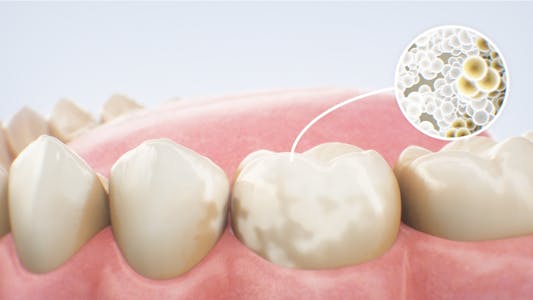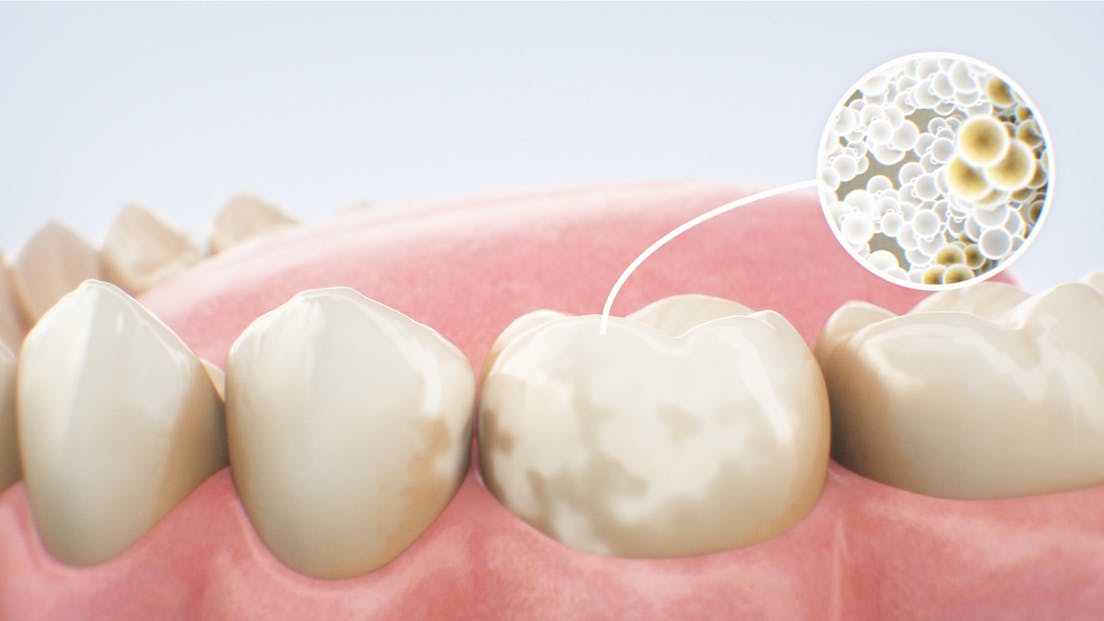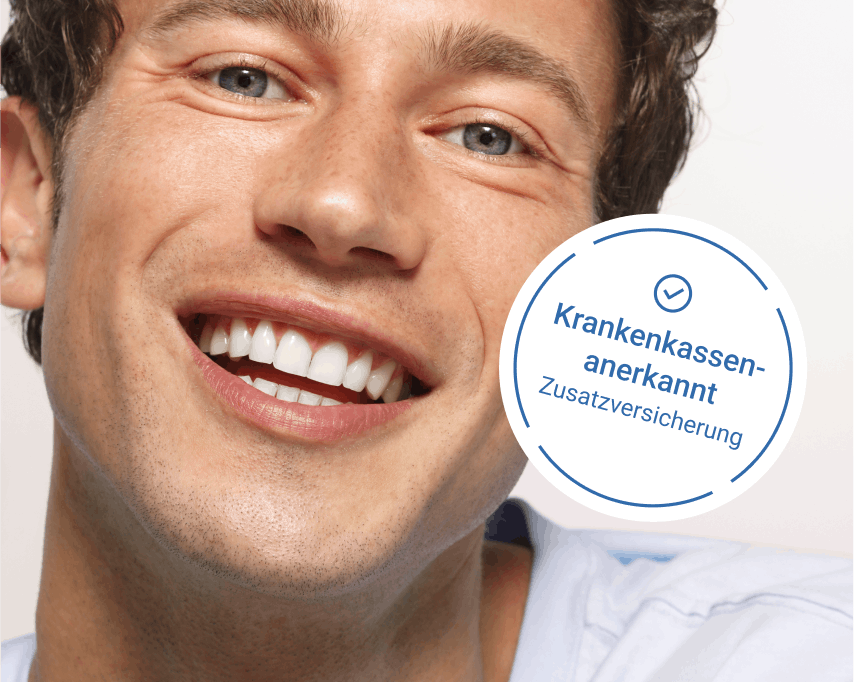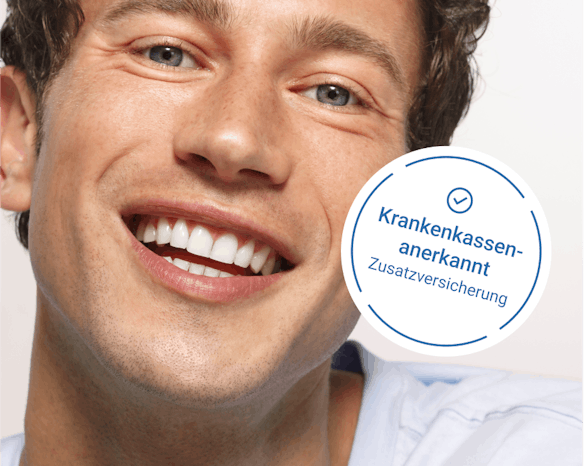How Teeth Whitening Works
A radiant smile with white teeth is often seen as a symbol of health and attractiveness. But many people struggle with tooth discoloration and wish for teeth whitening to smile confidently again. In this article, I want to explain to you how teeth whitening works, what methods are available, and how you can achieve the best results for your dental health with ALPINE WHITE and our products.



Why do teeth become discoloured?
Tooth discoloration is a common problem that can have many causes. Stimulants like coffee, tea, red wine or tobacco are often the main culprits of discolouration. These contain colour pigments that settle in the pores of the enamel over time. Poor oral hygiene and skipping regular professional teeth cleaning also contribute to the formation of deposits on the tooth surface. In addition to these external influences, age or a change in tooth substance can also lead to discoloured teeth.


For a healthy mouth and beautiful teeth, regular professional teeth cleaning is essential. Our specialists detect early signs of caries and prevent them.
- Personalised dental hygiene
- Gum check & caries control
- Painless cleaning with AIRFLOW
How does teeth whitening work?
Teeth whitening, also called bleaching, aims to remove discolourations on the tooth surface and in the enamel. Various bleaching agents are used for this purpose, which penetrate deep into the enamel and break down the colour molecules there. Hydrogen peroxide and carbamide peroxide are the most commonly used bleaching agents because they have a strong whitening effect.
Once these bleaching agents come into contact with the enamel, they decompose into oxygen molecules that break up the colour pigments in the enamel, thereby lightening the tooth colour. This works both on surface discolouration and on deeper discolouration in the dentin, the layer beneath the enamel.
Bleaching Methods: Ways to Brighter Teeth
When it comes to whitening teeth and effectively removing tooth discolouration, there are various bleaching methods that are used. One of the most common methods in tooth bleaching is the application of bleaching gel, which can be used either in the dental practice or at home. The gel is applied to the teeth and held in place by a custom-made plastic tray. This tray ensures that the gel is evenly distributed and the teeth are fully treated.
In addition to professional bleaching methods, there are also specially developed toothpastes that contain gentle brightening ingredients and remove surface discolouration. While toothpastes achieve more superficial effects, bleaching gels are significantly more intense and can penetrate deeper into the tooth enamel to enable brighter teeth in the long term.
It is important to note, however, that bleaching does not work on existing dental restorations such as a crown, as the material of the restoration does not react to the bleaching agent. In such cases, the dentist must individually adjust the colour of the restoration to achieve a uniform result.
Professional bleaching vs. home bleaching
There are various methods of tooth whitening that can be used depending on your needs and preferences. In the dental practice, the so-called in-office bleaching or power bleaching is often used. This method is particularly effective because it uses highly concentrated bleaching agents that allow for rapid and intensive whitening of the teeth. In this method, the gums are carefully covered to protect them from the bleaching agent, and the bleaching gel is applied directly to the teeth. Impressive results can be achieved within one session.
Another professional method is the walking bleach technique, which is often used for discoloured teeth after a root canal treatment. In this method, the bleaching agent is applied directly into the tooth and left there for a few days until the discolouration inside the tooth has disappeared.
In addition to professional bleaching in the dental practice, there is also the option of home bleaching. For this, you will receive a custom-made dental tray and a bleaching gel from your dentist, which you can use at home. Home bleaching is a gentle method that is used over a longer period until the desired tooth colour is achieved.
We also offer a wide range of home bleaching products, such as the Whitening Kit or whitening strips.
Professional bleaching at ALPINE WHITE
One of the most effective bleaching methods is in-office bleaching, which we offer at ALPINE WHITE. This method is carried out by our dental professionals and is a safe and gentle way to significantly brighten your teeth in just one session. Unlike conventional bleaching procedures, which often rely on hydrogen peroxide, at ALPINE WHITE we use a peroxide-free method with PAP (phthalimidoperoxycaproic acid). This modern technology whitens your teeth without irritating the enamel or gums and does not cause sensitivity.
In-office bleaching is particularly effective for stubborn stains that have accumulated over the years. After a thorough pre-treatment, during which your gums are carefully covered to protect them from the bleaching gel, the gel is applied to your teeth. Within 90 minutes, you can achieve visible results and leave the studio with white teeth.
For an even more comprehensive treatment, we also offer the combo package, which combines in-office bleaching with a dental hygiene session. This way, you not only get a thorough cleaning of your teeth but also an immediate visible whitening – all without pain or side effects.


Gentle and effective whitening for healthy teeth: We combine bleaching and dental hygiene for the best results.
- Naturally white teeth
- Effective tooth whitening without peroxides
- Gentle tooth cleaning with AIRFLOW
What happens to the enamel during bleaching?
A common concern with bleaching is the condition of the enamel. The enamel is the outer, protective layer of the teeth and plays an important role in dental health. If the enamel is attacked by aggressive bleaching agents, it can lead to damage to the tooth structure and long-term problems such as cavities or sensitivity.
Therefore, it is important that you choose a tooth whitening treatment that is gentle on the enamel, like that of ALPINE WHITE.
How does ALPINE WHITE protect your dental health?
At ALPINE WHITE, we specialise in developing products that promote your dental health while helping you achieve a bright white smile. Our tooth whitening products and in-office bleaching treatments are free from hydrogen peroxide and instead use PAP (Phthalimidoperoxycaproic acid), a gentle and effective alternative to conventional bleaching agents. PAP whitens the teeth without attacking the enamel or damaging sensitive teeth. It is especially important to use gentle products to avoid unnecessary irritation, particularly in cases of exposed tooth necks or tooth sensitivity.
Our ALPINE WHITE Whitening Toothpaste contains natural ingredients that gently whiten the teeth without stressing the enamel. It effectively removes stains caused by stimulants like coffee or tea while ensuring thorough cleaning of the interdental spaces. Combined with regular professional dental cleaning at the ALPINE WHITE studio, you can achieve long-term natural whitening of your teeth.
For more intensive whitening, we offer our home bleaching products, which you can use safely and easily at home. Our ALPINE WHITE Whitening Strips, for example, are an excellent alternative to a dentist's visit and offer gentle yet effective whitening of the teeth without hydrogen peroxide. They are particularly suitable for people with sensitive teeth, who are looking for a gentle yet effective method of tooth whitening.


Gently achieve whiter teeth with our pain-free in-office bleaching. Carried out by our specialised dental staff.
- Naturally white teeth
- Effective tooth whitening without peroxides
- No change in the tooth structure
Are there any risks associated with tooth whitening?
As with many dental treatments, there are some risks associated with tooth whitening that you should be aware of. Improper use of bleaching agents can lead to tooth sensitivity, especially in cases of exposed tooth necks. The gums can also become irritated if the bleaching gel comes into contact with the soft tissue.
Another factor to consider is the compatibility of tooth whitening with existing fillings, veneers, or dental prostheses. These materials do not respond to bleaching and retain their original tooth colour, which can cause them to stand out from the natural teeth after bleaching.
However, you do not need to worry when using ALPINE WHITE bleaching products or during in-office bleaching at our ALPINE WHITE Studio. Our products are specially designed to be gentle on enamel and gums. Thanks to the peroxide-free formulation of our home bleaching products, there are no risks of hypersensitivity or irritation. Even with sensitive teeth, you can achieve a radiant result with our products without unpleasant side effects.
How long does the result of teeth whitening last?
The duration of teeth whitening is highly dependent on your personal habits. Enjoying substances such as coffee, tea and tobacco can cause new discolouration, even after a bleaching treatment. To maintain the result for as long as possible, you should pay attention to thorough oral hygiene and regularly undergo a professional dental cleaning at the dentist’s practice or at the ALPINE WHITE Studio.
If you opt for a professional teeth whitening, you can expect it to last for several months up to a year. However, to keep your teeth permanently radiant white, it is recommended to regularly refresh the whitening. Especially with home bleaching, it makes sense to repeat the treatment at certain intervals to avoid new discolourations and preserve the result. Even after an in-office bleaching, a gentle touch-up at home or in the studio can help to maintain the brightness of your teeth in the long term.
Conclusion
Teeth whitening offers an effective way to restore discoloured teeth to their radiant white shine. Whether you choose to have professional teeth whitening at the ALPINE WHITE Studio or prefer a gentle home bleaching – there are many methods to suit your individual needs.
Remember: Radiant white teeth are not only a sign of beauty but also an important part of dental health. Always pay attention to good dental care and oral hygiene so that your smile remains bright and healthy for a long time!


